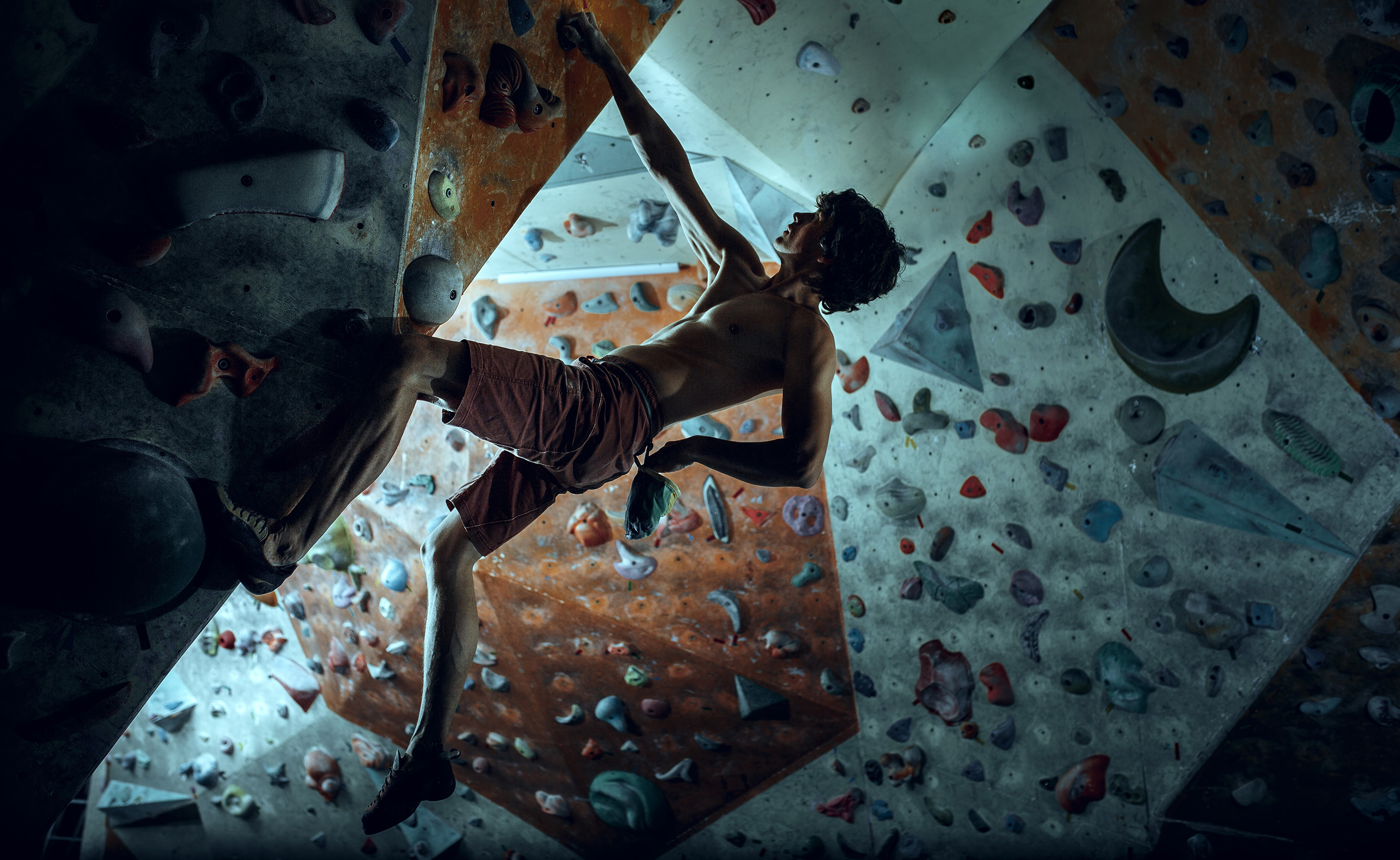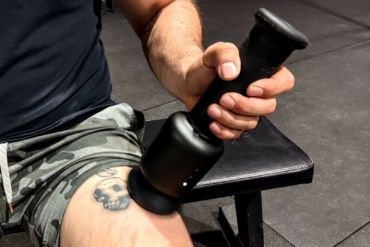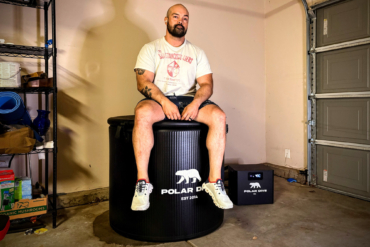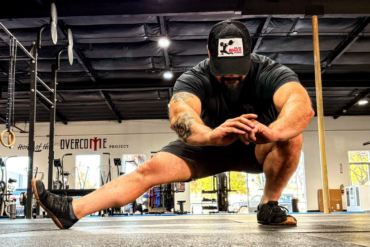I’ve been a personal trainer and climbing coach for over 30 years. I witnessed the incredible effect the first climbing gyms had on the progression of rock climbing. And I’ve seen rock gyms morph into centers of entertainment, socialization, co-working spaces, and general fitness. These advancements open up so much upward potential with the proper approach.
Here are my tips for getting the most out of your climbing gym, generated from decades of experience, observation, and questioning clients. My sincere hope is that it helps you improve your climbing ability and enjoyment of the sport, even in the midst of a busy adult life with all its inherent time constraints.
New to climbing gyms? Check out the climbing gym FAQs at the bottom.
Make It a Consistent Habit

I cannot overemphasize the importance of consistency, especially as we get older. And I feel this is even more important as responsibilities put the full-court press on our efforts to maintain and advance our climbing and health.
Over 30 years and hundreds of clients, there is one undeniable truth. The most consistent improvements, over the longest duration, with the best eventual outcomes, have come from a routine that becomes ingrained as a habit. This means consistent training times and days, with a consistent and gradually progressing program.
This means blocking out those times and days with an unwavering commitment. Yes, life happens, but at least 80% of the time, in my estimation, you have to make those training sessions to reap the investment you made with your wallet on the gym membership and the promise you kept to yourself. This requires prioritization of this time according to how important your climbing and health are to you.
And again, from my experience, this time is exponentially more effective if it happens early in the day, either before work or before tackling other responsibilities. I’ve been there just as much as anyone; you have the best intentions to exercise or do anything else for yourself, but you check your email or “just get one thing out of the way,” and your day gets hijacked. If training at the climbing gym is a priority, then treat it as such and commit to doing it before other life tasks push it out.
I believe this adherence to a consistent and unwavering schedule is the largest contributor to the effective use of your climbing gym.
Have Session Goals, a Plan, and Time Constraints

I think most people go to the rock gym and just try to send problems. It’s fun and social, and if having fun is the goal, have at it. But for performance gains, it’s the least effective use of the time in the climbing gym.
Your time to exercise is most likely limited, and if you have training-related goals, it’s imperative to make the most of that limited resource. You should have session goals and a rough plan before you squeeze into your climbing shoes. Whether you want to improve your technique, power, power endurance, or some other climbing factor, having a structure for your session ensures you are making the most of your time.
Also, setting time constraints will help you stay on course and get your desired training activities done. Setting both a total time constraint (which may not be totally up to you) and the time allowed for each activity will maximize the odds of a successful session.
Training programs vary, and having any plan is better than having none. So, whatever program you prescribe, have a goal, a list of activities you will do, and how long each will take. For example, for power development in 90 minutes, the goal may be to make as many moves as possible at your limit.
The plan may look something like a warmup, and then work three limit problems for 20 minutes each, progressing in angle from about 30 degrees to 40 degrees overhanging. Then, cool down with a few easy problems done with perfect form and a few mobility drills.
Again, if you are out just to have fun, there is nothing wrong with socializing while sieging a problem as a group. But just realize that this isn’t an effective training program.
Join or Form a Training Group

Training solo can be incredibly effective as there is nothing to distract you from your goals. But training with others has so many benefits.
Climbing gyms often have training groups based on ability and sometimes age. Some have women’s groups or groups based on sharing childcare duties while climbing. Groups form organically as people go to the gym on the same day at the same time, and climbers of similar abilities and goals find each other.
Training with others provides external motivation, feeds the need for social interactions, and is just more enjoyable to most. But it can also have more direct benefits to your advancement as a climber. If you climb with others, especially if they climb at a higher level, you can crowdsource vital information and observations of your climbing. Both of these are hugely advantageous in training.
Climbers have different body types and excel at different aspects of climbing movement. Others may offer technique suggestions that don’t come to you initially because we all tend to get stuck in our strongest patterns. And having another set of eyes on you while you climb can unlock deficiencies you would otherwise never know about.
And since groups tend to work on problems together, others will undoubtedly choose problems that don’t fit your strengths. Working on your weaknesses is the quickest path to improvement, and this aspect of training with others at a climbing gym is almost a “freebie.”
Lastly, being a member of a training group, regardless of how it was organized, helps keep you accountable for showing up and trying your best. And this adds to consistency, which, as described earlier, is a keystone to overall success in climbing.
If your gym doesn’t have a training group that fits your needs, by all means, form your own. You may find that others have been looking for the same opportunity.
Cluster Training, Health, and Social at the Climbing Gym
For many, climbing isn’t the only activity we enjoy, and that’s great. Modern rock gyms have so many activities and amenities that I routinely see clients fail to leverage for some reason.
Why not be a life hacker and combine training, other healthy activities, and social gatherings into the same location and time? Hear me out. I have forever seen people climb after work together, only to see them go home, maybe do another health or self-care activity, and then either eat alone or go out after and eat.
Why not train with your group, and then partake in a yoga or mobility class, hit the sauna, shower, and meet up with your group for an after-workout morning coffee or evening meal? Or any combination of things that can happen in and around the gym.
You must have the time for this, but many do some or all of these things in a day, regardless of how much time they had scheduled for the gym session. I know that this seems obvious, but I have seen what I just described for decades. Then I mention all this to a regular gym-goer, and it’s like I invented the wheel.
Many climbing gyms have scheduled social events, like “member appreciation night.” These events are a great example of this “life hack” that happens to be extremely social and bonding.
Final Thoughts on Making the Most of Your Climbing Gym

Nothing stated above is rocket science. But it’s rare that I see someone doing the above without me pointing them out. I teach a twice-weekly performance climbing class, and it’s essentially the execution of all of the above.
Our group has a session goal and plan. We put ourselves under time constraints to finish each segment of the workout. We use the other gym amenities, both during our sessions together and otherwise. And we have formed a tight group that travels to cliffs and boulders together. I believe we are making the most of the time, and we have consistent gains to show for it.
And I can proudly and happily say we have grown to become the best of friends. We have supported each other during our climbing objectives, but most importantly, in other aspects of life.
All that from a climbing gym! Now, go out there and make the most of your climbing gym.
FAQs
How do you feel comfortable in a climbing gym? It seems so cliquey.
In my experience, many rock climbers are introverts. This is a big reason many start rock climbing, as it’s a solitary effort, without crowds or fanfare. But rock climbers are humans, and they may crave interaction but are too shy to initiate.
My advice is to maybe drop your own ego and fears and just strike up a conversation with the climbers next to you. All it takes is, “How did you do that move?” I’ve seen this happen countless times, and it almost always results in a fruitful session and, many times, a long-term partnership.
How do you get in line for a popular boulder or route?
See above. Again, just ask. Unless you come across in some irritated way, I’ve almost never seen this produce a negative result. Climbers tend to sit and hang around the training board, boulder, or base of a route. There is almost never an organized line. Just ask if you can get on and use common sense. It’s easy to tell when someone is resting, or someone is champing at the bit to get on. You know, be a considerate human, and all should be fine.
When should you share beta?
Beta is climbing jargon for information on how to do a move or route. And figuring out this beta is part of climbing. It’s best to allow the climber to work through the moves themselves. Avoid flexing your ego and spewing beta, as this removes the opportunity for the other climber to expand their own skillset and experience the satisfaction and joy of doing so. Only give beta when specifically asked to do so.
What must I buy before going to the climbing gym?
You can buy just the essentials, but almost all climbing gyms rent all the gear you would ever need to get started in their facility. This way, you can try before you buy.
Is it worth getting a membership at a climbing gym if I’m a new climber?
I think it’s the most fruitful time to get a gym membership. As a new climber, you don’t have the movement repertoire required to advance quickly. And that takes repetition. And there is no better place to get many repetitions in as short a time, in as safe an environment, than a climbing gym. But this also means you could be repeating movements or techniques incorrectly.
The best way to leverage your new climbing gym membership is to go with an experienced buddy, join a class, or sign up for private instruction. That way, you can repeat the correct technique and movement in an efficient and safe manner.








